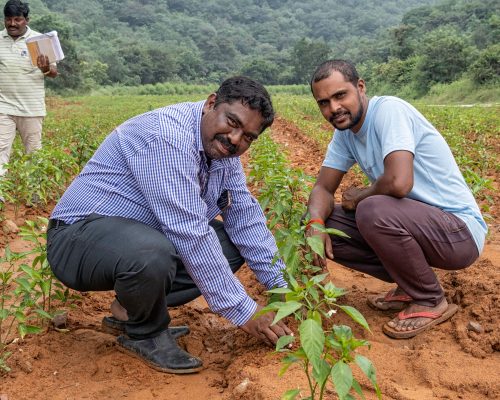Assist India – Building Ideal Communities
Sustainable Agriculture

Sustainable Agriculture
During the 1970s, the barter system was used in much of rural India, where people exchanged essential commodities for their living. Since then, new technologies have created more opportunities for income generation nationally; however, rural farmers have become poorer in relative terms during this period, with landlessness becoming increasingly endemic. Seventy percent of India’s population depend on agriculture for their livelihood sources, out of which most are small farmers. In previous years, farmers mostly cultivated tobacco, but then gradually started taking up cotton, chilli, or other commercial cash crops. Continuous cultivation without rotation, and the unlimited use of fertilizers and pesticides has depleted the fertility of the soil. Heavy losses in cotton cultivation led to farmers becoming increasingly indebted, with some farmers even going to the extent of committing suicide.
ASSIST’s sustainable farming projects involve the creation of demonstrative plots and training in crop rotation and organic farming methods to produce crops with low investment, and thus save the fertility of soil for years to come. Through nursery demonstration plots, farmers are able to learn seed treatment against fungal and bacterial diseases, which largely reduces the need for pesticide application after transplantation. Consumers of farm products are interested in purchasing vegetables, pulses and other cereal grains produced under organic farming practices, so farmers can fetch higher prices in the markets.


